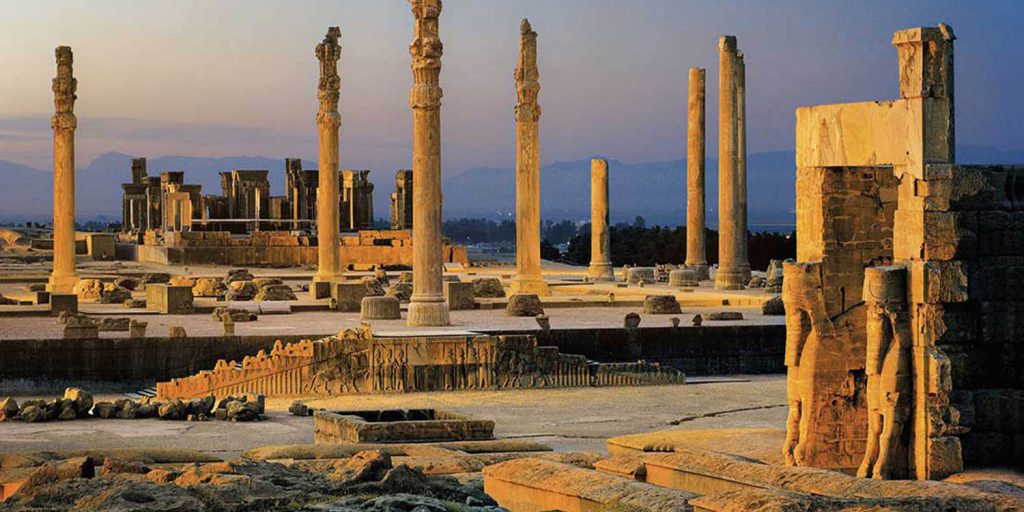
Menu

It is the name of one of the ancient cities of Iran, which was the glorious and ceremonial capital of the Kingdom of Iran during the Achaemenid Empire. In 518 BC, Persepolis was chosen as the new capital of the Achaemenids in Persia.
Persepolis is located north of the city of Marvdasht, north of the province of Fars (northeast of Shiraz). The founder of Persepolis was Darius the Great, but after him his son Xerxes and his grandson Ardashir I enlarged the complex by adding other buildings.

Much of the information available on the history of the Achaemenids and their culture is due to the inscriptions and inscriptions in clay carved on these palaces and on their walls and tablets. Sumner estimates that the Persepolis Plain, which contains 39 inhabited settlements and had a population of 43,600 during the Achaemenid period.
Historians believe that Alexander, a Greek general, invaded Persia in 330 BC. However, the ruins of this place are still standing and archaeologists confirm the signs of fire and invasion.
This historic site has been one of the UNESCO World Heritage Sites in Iran since 1979.
The Sassanid kings also left inscriptions in Persepolis in the Thatcher Palace. After the arrival of Islam in Iran, this place was also respected and it was called a thousand pillars or forty minarets.
Hundreds of years after the invasion of Alexander and the Arabs, and at a time when the memory of the Achaemenid kings was forgotten, passers-by before the ruins of Parseh saw carved images of the throne erected on the hands of the people and because that they could When they read the inscriptions carved on the stones, they thought it was the same Orang Jamshid that Ferdowsi mentioned in his Shahnameh. This is why this place was named Persepolis. Later, when archaeologists were able to translate the cuneiform inscription, they discovered that the original name was Parseh.
Main office: Office no. 5, First Floor,Building No. 404, Corner of Beheshti St. and Qaem Maqam St. Tehran Iran.
Tel : +985138519585 EXT. 117
WhatsApp : +968 912 14 982
Email : info@persiantoursgroup.com